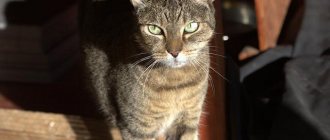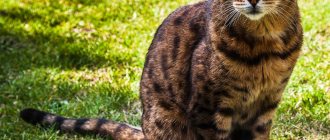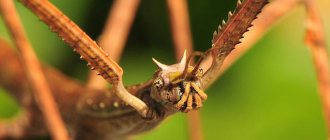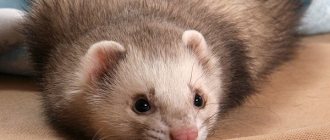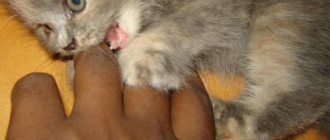Black Rat | 28 centimeters
The black rat is one of the smallest rats in the world. With a body length of 22 centimeters, its tail can reach a length of 28 cm. This is a heat-loving species that chooses forests and bushes as its habitat. In addition, rodents can often be found on ships. This species does not dig holes, but settles in the wild in trees, where it builds nests. This is a very common species that has spread throughout the globe, excluding the northern part. The rat feeds on seeds and fruits of trees.
Bosavi wool
One of the more recent discoveries, the woolly rat was first discovered by scientists in 2009, when a research team stumbled upon the beast in the Bosavi Crater, Papua New Guinea.
Bosavi is believed to have had no contact with humans and is 81cm long, making it the largest living rat in the world. Due to its status as a recent scientific find, the silvery creature has yet to be given an official name.
There were also 40 previously unknown species, 16 amphibians, three fish, a gecko, a marsupial, and several arachnids - none of which exist in other parts of the world.
Although the Woolly Bosavi is the largest existing rat currently known to science, it is not the largest that has ever existed. Scientists in East Timor, Indonesia, a hotbed of rodent evolution, have discovered the remains of an animal that was three times the size of a woolly animal.
"This is one of the world's largest rats, the same type that live in city sewers," said Dr. Christopher Helgen of the Smithsonian National Museum of Natural History, who accompanied the expedition.
Previously, six other species of giant rats had been discovered in Papua New Guinea. All seven are classified as belonging to the genus Mallomys, a family of rodents called Muridae.
Giant Gutia
Living more than 100,000 years ago on the Caribbean island of Anguilla, this large rat was twice the size of an adult human and 1,000 times larger than modern rats. Officially known as Ambyrhiza, the extinct creature is informally referred to as the giant gutia.
Find out more Why does a chinchilla bite fingers?
Fossil records indicate that there were no competing mammals on Anguilla during the creature's existence. The end of the period led to a rise in sea levels, to which the gutia could not adapt, leading to the extinction of the animal.
Smaller descendants of the ancient species roam the Caribbean islands today, but most weigh just over 2.5kg. These modern pests are often found in the Guantanamo Bay area of Cuba, where they are called banana pests because of the shape of their droppings.
African rat
The Sunshine State is trying to prevent the spread of the giant African Gambian rat. More than a decade ago, eight were released by an exotic animal breeder on an island in the Keys. So far, efforts to eradicate the pests have been unsuccessful; authorities fear that the rodents will reach the mainland and wreak havoc on Florida's ecology.
The African rat grows up to 50 cm in length and weighs 4 kg. The figures on the Gambia information website are much more modest: 43 cm, 3 kg. However, if the rats have a better diet than in Africa, the numbers are correct.
Capybara
The world's largest rodent is the capybara, which can be found throughout Brazil and neighboring countries. The South American rodent has a length of 8-11 cm, a height of up to 64 cm, and weighs 34-66 kg. In Venezuela, the main dish is capybara meat, which is especially popular at Easter.
There are also fossils of prehistoric rodents, which are much larger. For example, Photersomys pattersoni, 426 cm long, which weighed from 24 to 680 kg.
Chinese bamboo rats
Roasted rat may not be everyone's cup of tea, but in China the delicacy costs four times more than pork and chicken and is believed to cure baldness. They are raised as livestock for meat and fur.
Chinese bamboo rats are large in nature, but when sold they reach a weight of 4 kg and 50 cm in length.
Norway rat
Taxonomically known as Rattus norvegicus, the dun is widely distributed throughout the world, despite its Scandinavian nickname. With a body of 17 -25 cm and a tail of 15 -20 cm, adults reach 45 cm. It is not the largest rodent, but it is certainly one of the scariest.
Black rat
The black rat is slightly smaller than the Norwegian rat, has a length of fifteen to twenty centimeters, the tail is longer than the body. Active throughout the year, the wire-chewing pest is most often found in the south.
Find out more How you can get infected from mice
Lesnaya
The wood rat poses a threat to farmers and homeowners. The dark gray animal usually has a body of 17 cm and a tail of the same size.
Turkestan rat | 21 centimeters
The Turkestan rat is medium in size. The body of a rodent can reach 25 centimeters, the tail – 21 cm, but most often it is equal to the length of the body. Outwardly similar to the Pasyuk species, but much smaller. The animal chooses forest and mountain areas as its habitat. The animal loves to feast on walnuts, apricot kernels and shells. In the winter season, most of the population moves to human habitation. The species is widespread in the foothills of Central Asia.
Standard | 30 centimeters
The standard is the most common type of decorative rat in the world. The length of the animal’s body can reach 30 centimeters, the length of the tail – 20 cm. This breed is the ancestor of all existing species of decorative rats. The animal has an elongated, massive body, proportional paw length and short, smooth hair. Domestic rats are clean and take good care of themselves. The animals are not picky about food; they feed on vegetables, grains, fruits and even meat products.
Pros and Cons of Keeping Dumbo as a Pet
Dumbo the rat's house will not require large expenses
The decorative rat is one of those pets that does not require large expenses for its maintenance. Rats are curious and everyone wants to try their teeth. In addition, they require constant attention as they can fall and get hurt.
What attracts these animals is their developed intellectual abilities and lack of aggression towards humans and other animals.
The advantages of choosing Dumbo the rat as a pet include:
- cleanliness of the animal,
- omnivorous,
- low maintenance costs,
- ease of care.
But there are also disadvantages:
- the property of an animal to leave marks wherever it is,
- tendency to chew on any objects,
- expensive treatment
- people with a keen sense of smell notice a specific smell that comes from domestic rats,
- for your pet to feel good, you need to devote a lot of time to it,
- walking is necessary
- relatively short lifespan.
Musk kangaroo | 35 centimeters
The musk kangaroo (Tsepkonog) is similar in appearance to an ordinary rat. All limbs of the flailfoot are proportional and have weak, small claws. The maximum size of the musk kangaroo's body can reach 35 centimeters with a tail length of 12 cm. Tenaciopods prefer to live in dense thickets near water bodies. The musk smell characteristic of the animals became the reason for the name of the species - musky kangaroo. Females have a brood pouch where they carry their young for several months. The animal can move nimbly on the surface of the earth and climb trees. They choose insects and worms as food, but can also eat berries and root vegetables.
Gray big rat | 40 centimeters
The large gray rat (Pasyuk) is the largest species common in Russia. The pasyuk's body can reach a size of 40 centimeters, and the tail length can be 20 cm. In nature, these rats live near bodies of water. In the winter season, they prefer to be housed in human buildings. To establish themselves in natural conditions, rodents dig holes up to a meter deep and 5 meters long. Pasyuki are omnivores and also prefer food of animal origin.
Pacarana
Pacarana is the only representative of the Pacarana family. Rodents inhabit countries such as Colombia, Bolivia, Peru, and Venezuela. Less common in Brazil and Ecuador. Pacaranas prefer to settle deep in tropical rainforests, away from humans. The body length of an adult animal is at least 73 centimeters, and its weight ranges from 11 to 15 kilograms.
In preparation for childbirth, females make cozy nests in deep crevices of the earth or rocks so that their offspring do not fall into the clutches of predators. A newborn pacarana weighs 850-900 grams. Animals feed on vegetation, mainly grass and berries.
Potoroo | 41 centimeters
The Potoroo belongs to the genus of marsupials of the Kangaroo rat family. This is a fairly large rodent, its body length can reach 41 centimeters, and its tail – 32 cm. The hind legs are more developed and longer than the front ones. The potoroo moves by jumping, alternately on its hind legs, like a jerboa. Like all marsupials, the female has a well-developed brood pouch, where the cub is located, after birth within 4 months. The main habitat of the potoroo is thickets of bushes, undergrowth or even steppes. As a rule, animals are nocturnal. During the day, they prefer to hide in constructed burrows. Potoroos feed on plants, mushrooms, and insects.
Training and playing with your pet
Dumbo is very trainable
Dumbo rats are quite obedient and easy to train. They love to play with soft and hard balls, willingly explore labyrinths and run through their owner's hands. Many pets love to climb onto the shoulders and watch everything that happens from there.
If you want to teach a rat various tricks, you need to remember a few rules for training these rodents:
- The optimal duration of classes is 20–30 minutes.
- The animal is fed for the last time 8–10 hours before class. In this case, he will be more willing to do what the owner requires, wanting to receive food for it.
- It is necessary to ensure that the animal fully understands what is required of it. Only after this do they move on to learning other tricks.
What can you teach a Dumbo rat:
- find one object from several,
- get out the pieces of paper and beads hidden in the matchbox,
- stand on its hind legs at the owner's command.
Bamboo rat | 48 centimeters
Bamboo rats are a type of burrowing rodent and are the largest in the mole rat family. Bamboo rats can grow up to 48 centimeters in body and have a tail length of 15 cm. In particular, they lead an underground lifestyle. The animals have small eyes and small ears. They have very large teeth and strong claws, which they need for digging burrows. Rodents choose bamboo thickets as their habitat. Their main food is bamboo roots, stems, seeds and other plant fruits. This species is usually common in Asian countries: China, Thailand, etc.
Other large rat species
In general, the Bosavi woolly rat is the largest among the true rats of the genus Rattus and has practically no competitors. Animals of similar sizes and similar to rats are not actually rats, and receive the corresponding names only due to their external resemblance.
For example, the so-called nezomyids, a family of rodents common in Africa, are similar to rats. Among them there is the Gambian marsupial rat (also known as a giant marsupial). The body length of individual representatives of this species can reach up to 90 cm, but due to their slenderness and mobility they weigh a maximum of 1.2-1.4 kg.
The giant marsupial rat is shown in the photo below:
This species is known, first of all, not for its size, but for its service to humans - thanks to its keen sense of smell, Gambian marsupial rats are used to find and neutralize mines. Preparing and training one such “specialist animal” is several times cheaper than training a sapper dog, with the same efficiency.
This is interesting
African marsupial rats got their name from their voluminous cheek pouches. They carry food in these bags, just like hamsters do. These rats are not true marsupials and do not have pouches for bearing offspring.
Other examples of large rats that are not true rats are:
- Large cane rat. This animal also lives in Africa, has a very dense build, reaches a length of 61 cm, and some adult males can weigh up to 9 kg. In the photograph below you can estimate the size of a representative of this species:
- A large bamboo rat, the hero of online news that “a giant rat has been caught in China.” It lives in Southeast Asia, including China, reaching a length of 50 cm and a weight of 4 kg. The photo below is an illustration of a typical “yellow” news:
However, in reality, these animals have only a name from rats. They are related to real rats, members of the genus Rattus, to the same extent as baboons are related to humans.
Comparing representatives of these species with pasyuki is as incorrect as, for example, nutria - the latter are also very large, belong to the rodent family and resemble rats in appearance. But it doesn’t occur to anyone to spread the news on the Internet that, they say, a giant mutant rat was caught in Azerbaijan, and confirm it with a photograph of a farmer with nutria obtained at his headquarters.
But since we are talking about large relatives of rats, it would be fair to mention the largest rodents in the world. Moreover, to one degree or another, these animals really look like gray basement pests...
It would be a stretch to call almost any rodent a rat. Moreover, the structural features of most representatives of this family are similar, and something “rat-like” can be discerned in the appearance of all of them. Therefore, animals that look like a large rat can belong to a variety of species.
For example:
- The capybara is the largest rodent in the world. At first glance, it can be mistaken for some kind of cross between a rat, a dog and a boar. The body length of an adult capybara can reach 1.35 m, the height at the withers is 60 cm, and the weight is 65 kg (in some individuals, up to 91 kg). Look at the photo and tell me what is “rat” in the appearance of this creature:
- The beaver is the second largest and largest rodent in the world, weighing up to 32 kg.
- Nutria, reaching a length of 60 cm and a weight of 12 kg. This animal especially resembles a large rat with its gold-colored teeth,
- The marmot reaches a length of 70 cm and by the end of summer, before hibernation, fattens up to 10 kg.
Interestingly, in the Pleistocene, the giant beaver Castoroides ohioensis lived in North America, whose body length reached 2.75 m and weight 350 kg. The largest extinct rodent, Josephoartigasia monesi, supposedly weighed up to 1.5 tons.
It is also believed that some carnivorous mammals resemble large rats, although they have a bushy tail. This similarity is often used in questions for various intellectual games, referring to mongooses. In fact, it is possible to find common external features in mongooses and rats, but it is almost impossible to confuse these animals with each other.
Mongoose photo:
Agree, it would be strange to mistake him for a rat...
Big rat kangaroo | 55 centimeters
The large rat kangaroo belongs to the family of marsupial mammals. The length of the animal's body can reach 55 centimeters, and the length of the tail is 40 cm. The rodent resembles a kangaroo: its hind legs are larger and much longer than the front ones. It moves in leaps and bounds, but can also move on all four legs. This species has 34 teeth and canines are very well developed. The rat kangaroo has a well-developed brood pouch, where the development of the baby embryo occurs. The animals live in grass nests that they build themselves, or in rabbit holes. They feed on vegetation, mushrooms and root crops. They lead an active nocturnal lifestyle. The kangaroo rat is a rare species, particularly common in Australia.
Giant Afghan and Pakistani rats are also a legend...
And another legend, very famous in the past, but today somewhat forgotten, is associated with supposedly large rats from Afghanistan. The essence of the story is this: in the 1980-1990s, in the era of shuttles and the fashion for exotics, smooth-haired dachshunds became very popular in Russia. And allegedly, for some owners, these dogs behaved completely out of character for the breed.
After examination by veterinarians or dog handlers, it turned out that sometimes special, very large Afghan and Pakistani rats were sold to wealthy buyers under the guise of dachshunds. They say that these rodents had large ears and were exactly the size of a small dog. But the main intrigue of these tales was that such pets had an unpredictable character and could unexpectedly attack their own owners.
In reality, this story is nothing more than an urban myth. The same rats live in Afghanistan and Pakistan as in Russia, and science does not know of such a rodent that can be confused with a dog.
Perhaps the main conclusion that can be drawn from our entire story is that you shouldn’t be afraid of some huge mutant rats. Those rodents that can be found near human habitation usually do not reach large sizes. They certainly will not attack the person himself with the aim of biting or snatching a piece of his flesh.
Yes, rats sometimes bite people, but they do this very rarely, mostly in self-defense. Indeed, large rats are rare and very peaceful; seeing them is a real success for a zoologist and an almost impossible task for an ordinary city dweller. Therefore, we can sleep peacefully, giant rats from the sewer do not threaten us.
Cane Rat | 61 centimeters
Cane rats are among the largest in the world. The animal belongs to the genus of African rodents. The body length of the cane rat can be 61 centimeters, and the tail – 26 cm. Massive rodents with a body weight of up to 9 kilograms are similar in appearance to nutria. Strong, short limbs have thick and well-developed claws. The animal's head is quite large, with small eyes and rounded ears. The fur of cane rats is bristly and stiff, growing in tufts. The rodent chooses wetlands near reed thickets as its habitat. Animals build burrows in coastal vegetation, where they remain almost throughout the day. These are excellent swimmers who take refuge in bodies of water in case of danger. The main delicacies of this type of rat are grain crops, sugar cane, pineapples, and cassava. African residents often hunt reed rats and eat them.
More about huge mutant rats
Yet stories of giant mutant rats in the Moscow metro or abandoned military bunkers remain surprisingly enduring. Their phenomenon is easy to explain: people do not want to put up with the dullness of their everyday lives and are willing to believe in almost any unusual and inexplicable phenomena, even frightening ones. After all, these “horror stories” give hope that the world around is not as ordinary and dull as it seems most of the time, and there is certainly a place in it for some mysteries - including mutant rats.
Simply put, people want to believe in the existence of monster rats, and science fiction writers, horror film directors, and rumor mongers simply exploit these fears to their advantage. As a result, more and more new versions of “facts” and “eyewitness accounts” constantly appear, and the old ones are repeatedly altered and turned into more and more new versions, sometimes completely different from the originals.
For example, the stories allegedly told by Moscow metro drivers are very well known. According to them, in the farthest sections of the tunnels, the headlights of trains occasionally reveal huge rats the size of dogs crossing the tracks. Most of these stories are full of chilling details: in that brief moment that a ray of light snatches a rat from the darkness of the tunnel, the animal manages to look at the driver with evil green (in other versions - red) eyes, and then suddenly news appears that these animals no poison works. It is unknown which of the drivers tried to poison these mutants (just as the names of those who actually saw these animals are not known), but most storytellers consider it their duty to mention such immunity.
Also popular is an allegedly real story that happened to a group of Moscow diggers (specialists involved in the study of caves and artificial underground tunnels). In a sewer under the zoo, this team was attacked by five large rats the size of a dog, and the guys were saved only by throwing their crowbars at the animals and in this way scared them away.
This story was continued. They say that an anonymous person later called the diggers club and said that there were a lot of large rats in secret bunkers for storing radioactive waste. It is well known that the more secrecy and conspiracy theories there are in a story, the more popularity it will have...
There are also stories circulating among people about giant rats climbing out of manholes near landfills and scattering dogs there. Moreover, these stories are unusually tenacious: the first reports of such rats appeared back in 1989, and after that their number has only increased.
It is interesting to note that the less believable each particular story is, the more easily it spreads among the people. It is the details that seem fantastic that make such tales “hot”: either huge rats create the most complex organizations with commanders, pioneers and suicide bombers, or they deliberately feed on poisons or winding wires - there are countless such details.
Someone is even trying to mix together rumors about mutant rats and news about the discovery of Bosavi woolly rats. The result is a mix unimaginable for a specialist that, they say, scientists have discovered a new species of giant rats - Indonesian - in the Moscow subway. Why Indonesian? Simply because the name is simpler than “Bosavi woolly rat” or “Papua New Guinea rat.”
We will not waste time refuting such speculation, but will only say that none of these rumors have factual confirmation.
Papuan rat | 1 meter
Papuan rats are one of the largest rodents known to science. They live on the island of Papua (New Guinea). The body length of giants can reach 1 meter, the tail - 30 cm. Externally, the large rodent resembles an ordinary beaver, the difference is only in size. Papuan rats live in the mountains, in the mouths of extinct volcanoes. Thanks to their thick fur, animals can survive even in the harshest climatic conditions.
18 6
The biggest rat in the world
Such a rodent is the woolly Bosavi, which was found by scientists in New Guinea. Its dimensions can reach 1 m and weight up to 1.5 kilograms. They are otherwise called giant marsupial rats.
The woolly Bosavi is similar in size to a small dog. They are not shy and friendly towards humans. This is due to the fact that they were found far from civilization, and the animals had no contact with people. You can even pick them up and stroke them without fear; the rodent will not bite.




